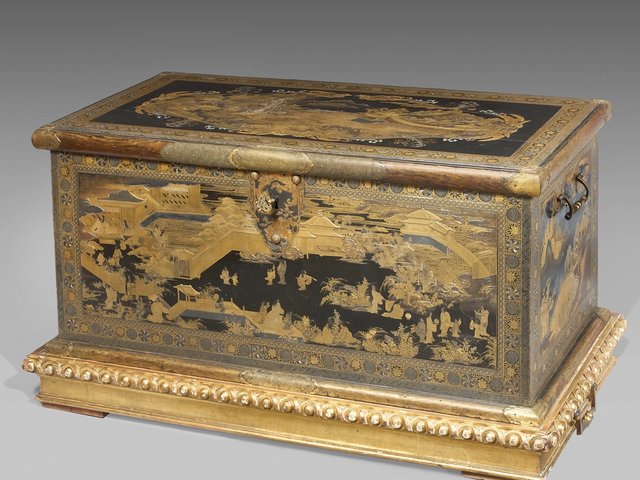Amsterdam
This dazzling exhibition dedicated to the rococo architecture and decorative arts of the Netherlands explores a field which has never before received seriously scholarly attention and is little recognised even in Holland.
Rainier Baarsen, curator of Western decorative arts at the Rijksmuseum, has assembled several hundred objects, primarily from Dutch collections. They include not only ceramics, silver and furniture, but a great variety of artefacts which give a vivid impression of Dutch 18th-century society: donor boards, presentation boxes for the Stadholder, paintings and sculpture (notably by Jan Baptist Xavery), boiseries and chimney pieces. Madame de Pompadour meets Philippe Starck in the full-bloodedly glamorous display (by Paul Gallis) which complements and enhances the essentially decorative nature of the objects on display.
Admirably well researched and thoughtful, the exhibition examines its subject matter through the lens of patronage and manufacture. Rococo in the Netherlands found its most important patron in Stadholder William IV, who until his early death in 1751 was “the most ambitious and consistent patron of Netherlandish Rococo”, and presided over a Court at The Hague to which he was determined to give a fashionable French allure.
During his brief period in office his strong enthusiasm for the French rococo style encouraged him to commission for his own use furniture and fittings such as a staggering pair of torchères of 1749-51 by Agostino Carlini (lent from Huis ten Bosch). It also persuaded the cities and individuals who wished to gain his favour to present him with objects, such as gold presentation boxes, in the same manner.
The influence of court taste was boosted by the numerous Huguenot silversmiths who worked in the Netherlands, while during the Seven Years’ War craftsmen from France and Germany, seeking patronage in the pacific Netherlands, brought with them advanced rococo ideas. From 1767, the popularity of the rococo taste was revived under the patronage of William V, and his patronage forms the final section of this admirably lucid display.
“Rococo in Nederland: a riot of ornament” (until 3 February) is honest about the achievements of the Dutch Rococo. This was not, the commentary suggests, a style that put down deep roots in the national culture.
In the Delft pottery factories the rococo culture never became accepted.
There were no architects in the Netherlands designing in the rococo style other than Pieter de Swart in Amsterdam, and the interiors that were created—such as the remarkable room from a house in the Keizersgracht described in the catalogue as the richest room in Amsterdam—were primarily put together by craftsmen.
While the influence of the leading French designers is often apparent, an individual Dutch rococo style did emerge—even though some important manufacturers in centres such as the Delft pottery factories, remained resistant. In a number of instances, rococo ornament is applied as a purely surface ornament as in an Amsterdam armchair of around 1750. But some craftsmen attempted bolder experiments, and some of the results are surprising, as though craftsmen, faced by the difficulty of transposing copy book designs into three dimensions, produced which were certainly novel and might have looked out of place in a French interior of the period.
A boldly shaped cabinet of around 1755-63, from the Rijksmuseum, uses swelling bulging forms with a German flavour, while a row of highly individual chairs reinterpret copybook ideas without perhaps always realising the potential of the imitated designs.
Silver is displayed on a generous scale and with a fine eye for decorative effect, contrasting the Amsterdam and Hague styles. The various services, including the previously unexhibited wedding dinner service commissioned from several craftsmen in The Hague in the late 1750s and now in the possession of the Grand Duke of Luxembourg, use rococo decorative motifs while remaining relatively restrained, and even plain, in overall shape.
The exhibition is accompanied by an impressive catalogue (DFl 85, Waanders Uitgevers, Zwolle) by a number of authors, edited by Rainier Baarsen who contributes an essay and numerous entries. Richly illustrated, the catalogue shows many of the objects in situ, often in the interiors for which they were commissioned, and provides extended entries on each object. While the catalogue text is in Dutch only, for the non-Dutch reader guidance is provided by the admirable free handbook (also in English) which gives a succinct summary of the exhibition’s dense and powerfully articulated argument. Intellectually and visually, this is a feast.


